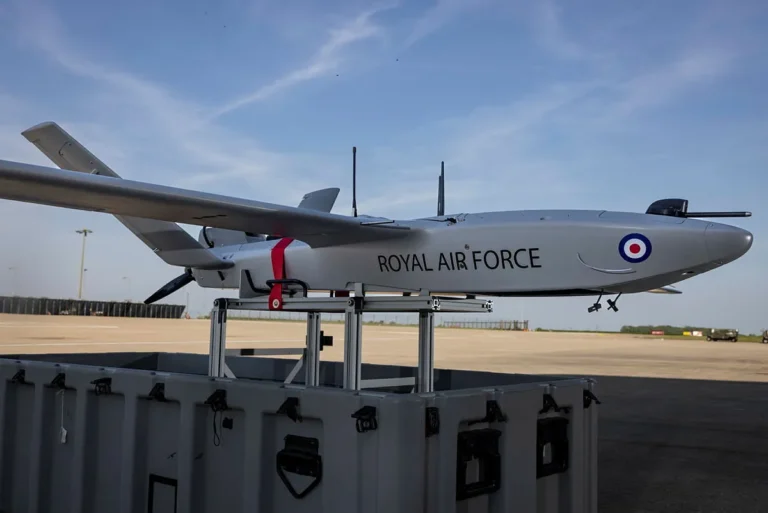Follow Us:

Share
Germany is taking decisive steps toward developing a next-generation main battle tank, unofficially referred to as the Leopard 3.
This project aims to enhance firepower, mobility, and protection for the German Armed Forces while serving as an interim solution before the Main Ground Combat System (MGCS) is fully developed.
The German procurement office BAAINBw has commissioned technical studies to explore key advancements in Leopard 3 tank concept, focusing on a 130mm main gun, a new powerplant, and advanced protection systems.
So it seems Germany might be developing a Leopard 3 tank. Recent contracts announced by the BAAINBw point to the following developments:
— Sam Cranny-Evans (@Sam_Cranny) February 6, 2025
– Ammunition for the @RheinmetallAG 130 mm gun
– New engine from @Liebherr
– Improved protection from @hensoldt
– And improvements to the… pic.twitter.com/a87dE9mtpz
These developments will not only shape the Leopard 3 tank but could also influence the final MGCS design.
One of the most significant upgrades in Germany’s future tank program is the introduction of a 130mm smoothbore gun, developed by Rheinmetall.
This new weapon represents a major leap in firepower over the current 120mm gun used on the Leopard 2A8, offering a 50% increase in kinetic energy, which dramatically enhances its ability to penetrate modern armor.
This shift aligns with the growing trend in tank warfare, as increased-caliber weapons become essential for countering improved enemy defenses.
The 130mm gun requires an automatic loader, as its ammunition is significantly larger and heavier than 120mm rounds.

Rheinmetall is also developing three specific types of ammunition for this gun: DM13 rounds for qualification testing, DM11 multifunctional high-explosive shells, and DM23 kinetic-energy penetrators designed for defeating enemy tanks.
These rounds will significantly increase the tank’s versatility on the battlefield.
This weapon was originally intended for the Franco-German MGCS program, which aims to replace Germany’s Leopard 2 and France’s Leclerc.
However, Germany’s decision to integrate this high-energy weapon system into an interim tank suggests an urgency to field more advanced armor before MGCS is operational.
Mobility is a critical factor in modern armored warfare, and Liebherr has been commissioned to develop a new engine, known as OLYMP, to power the Leopard 3.
This new powerplant is expected to offer greater horsepower, better fuel efficiency, and improved battlefield reliability while remaining compatible with Leopard 2 chassis components.

The OLYMP engine system will feature a modernized gearbox, upgraded cooling mechanisms, and improved exhaust filtration to reduce infrared visibility, making the tankless susceptible to enemy detection.
The design will be modular, allowing it to be adapted for future armored vehicle projects, including the MGCS platform. This represents a strategic shift in Germany’s approach to tank mobility, ensuring that its armored forces maintain a technological edge.
By incorporating proven components from the Leopard 2, the OLYMP engine will streamline the transition process for German tank crews and maintenance personnel. This means the Bundeswehr can field the Leopard 3 sooner, without requiring an entirely new logistical framework.
In modern warfare, protection is just as important as firepower and mobility. To counter increasingly sophisticated threats such as anti-tank guided missiles (ATGMs), drones, and loitering munitions, Germany is investing in next-generation active protection systems (APS).
Hensoldt and KNDS Deutschland are leading efforts to develop an improved version of the MUSS self-protection system, which has already been deployed on German armored vehicles.
The MUSS 2.0 system features advanced missile and laser warning sensors, infrared jamming technology, and automated countermeasures capable of neutralizing incoming threats in real time.

Unlike older versions, this new system can track multiple threats simultaneously and autonomously prioritize countermeasures, making it highly effective against modern high-speed ATGMs like the Javelin, Kornet, and Spike.
Germany is also investing in an automated barrel adjustment system to enhance the Leopard 3’s accuracy. Traditionally, tank gunners must manually compensate for barrel bend caused by temperature changes, but the new system will automate this process, reducing human error and improving long-range precision.
As Germany moves forward with these critical tank upgrades, the Leopard 3 is expected to enter service in the early 2030s, bridging the gap between the Leopard 2A8 and the MGCS.
This project highlights Germany’s commitment to maintaining a powerful and technologically advanced armored force, ensuring its tanks remain among the most formidable on the modern battlefield.
Share
Defense Feeds is publication focusing on informing, engaging, and empowering the world by providing accurate information from defense technology.
Powered by Defense Feeds © 2025 – All rights reserved.